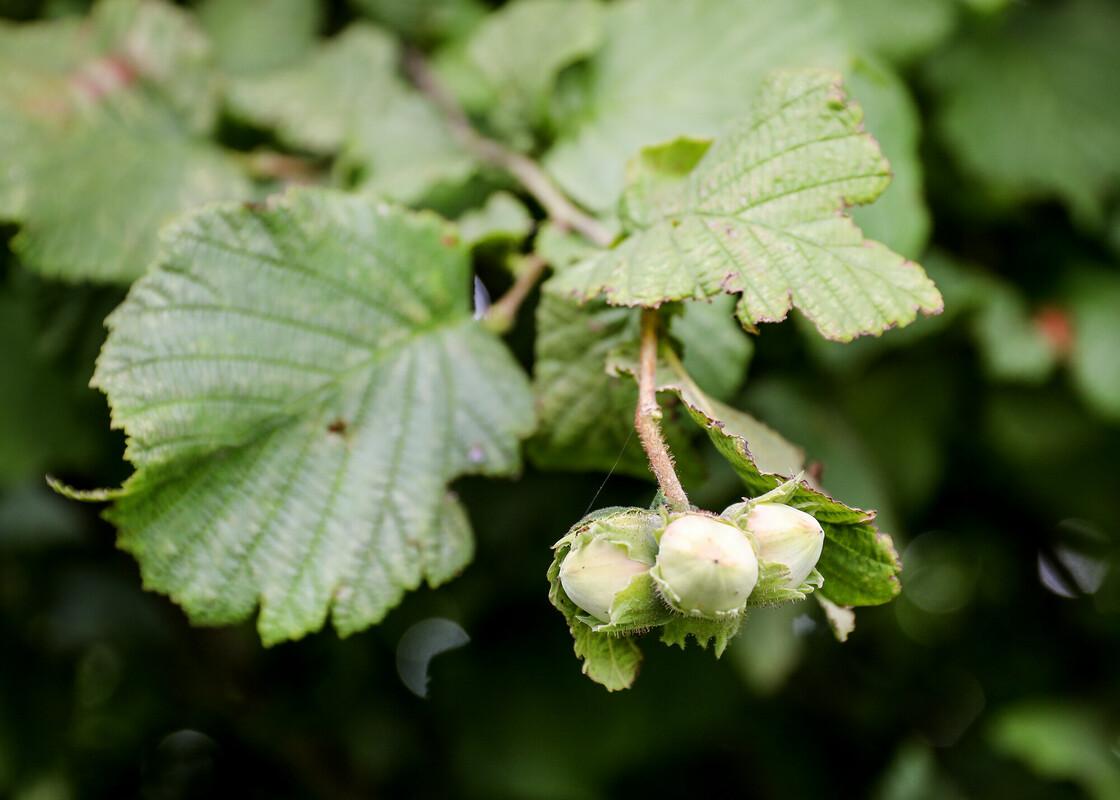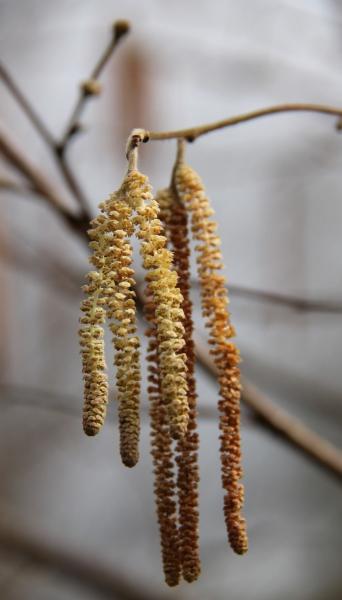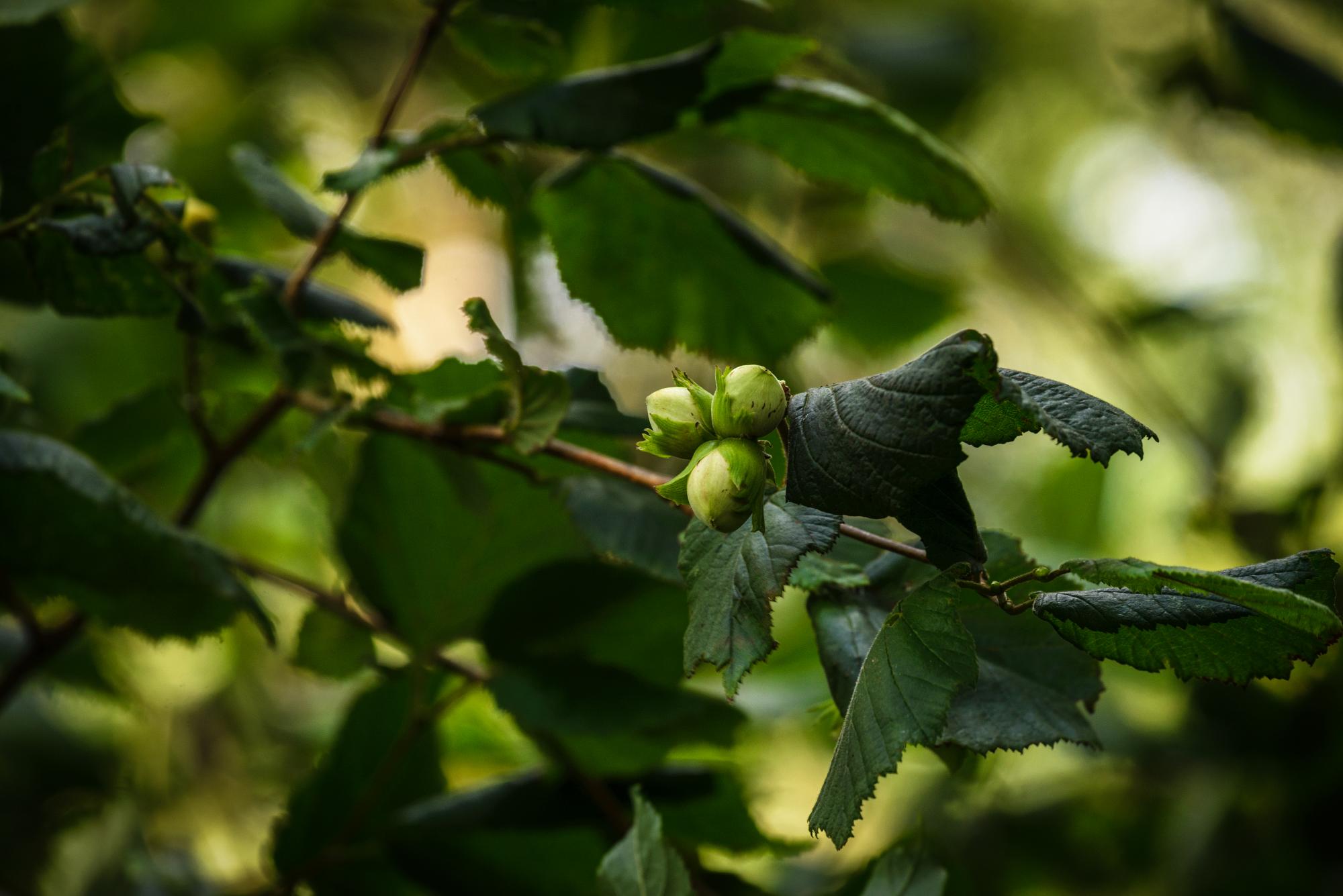
Species Name: Corylus avellana
Hazel is a small tree which is common in woodlands and was traditionally used for coppicing. It is important for many other species including the protected hazel dormouse.
Hazel is a small tree with smooth, shiny grey bark with horizontal warts (lenticels) and tends to peel. Older trees' trunks appear more cracked and textured. It has alternate green, oval buds on a slightly zigzagged twig.

The leaves are large, heart-shaped, with a sharp point and toothed edge. Some leaves are more rounded than others, they have a crinkled, fuzzy texture.

In the winter it has green/yellow hanging catkins and tiny pink flowers that appear in early spring. In the autumn it produces nuts held in a woody husk.

Hazel trees are found across Europe and Northern Africa. It is common in the woodland understorey and hedgerows around the Forest.
The hazel is associated with magic, and the nuts were once used as charms. It has many beliefs connected with protection against evil spirits, and is a sign of fertility and knowledge.
Hazel is a flexible wood when young, making it perfect for weaving into fences and screens as well as furniture. The coppiced timber can be used for bean poles and stakes.
Hazel can provide shelter for ground-nesting birds including yellowhammer, nightjar and nightingale. Other wildlife found within coppiced hazel include bluebells, silver-washed fritillaries and large emerald caterpillars.
The interlocking canopy of hazel allows the hazel dormouse to easily move through the forest, eating the nuts and collecting the green leaves to make into a breeding nest. The nuts are a good source of food for many other species such as nuthatches and jays.
In coppiced woodlands, hazel is often found below 5m in height but, if left to grow, can reach heights of up to 12m.
7% of the trees we are planting in the Forest this season are hazel trees.




